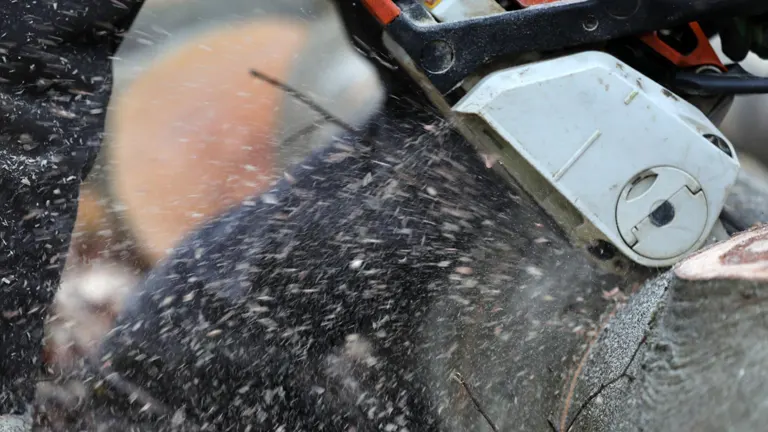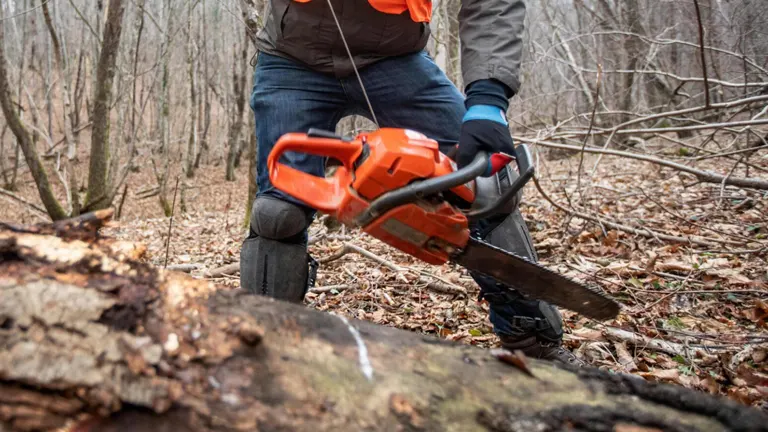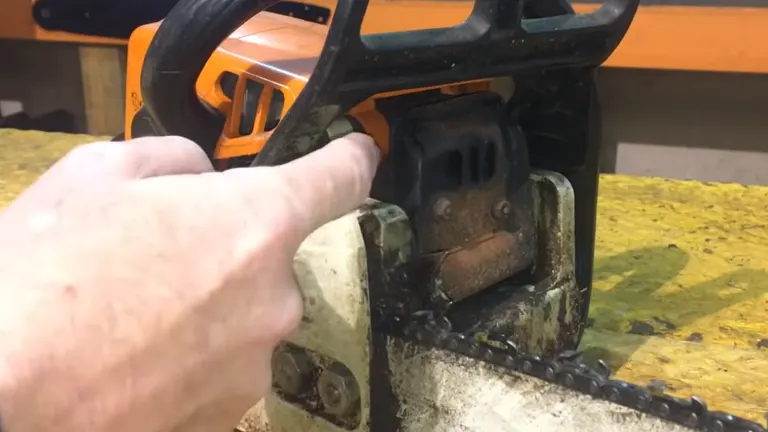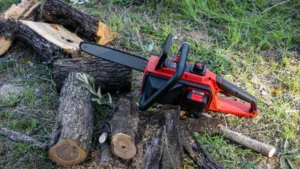The Dangers of Misusing a Chainsaw: A Warning Against Cold Seizures
- January 8, 2024
- 0 comment
Chainsaws, while being powerful and indispensable tools in construction, landscaping, and various outdoor tasks, are also complex machines that demand respect and proper handling. Misuse or misunderstanding of these tools can lead to severe accidents and machine damage. One such common, yet often overlooked, issue is the phenomenon known as a ‘cold seizure’ in chainsaws. This article provides an in-depth analysis of the mechanics behind cold seizures, their implications, and practical strategies to prevent them, ensuring both the longevity of the chainsaw and the safety of its operator.
Understanding the Chainsaw Mechanics

Chainsaws operate at incredibly high revolutions per minute (RPM), typically between 12,000 to 14,000 RPM, which is significantly higher than other small engines like those in leaf blowers or hedge trimmers. This high RPM makes chainsaws particularly susceptible t
o what is referred to as a ‘cold seizure’. A cold seizure occurs when the chainsaw is subjected to intense work immediately after being started cold, without allowing it time to warm up.
What is a Cold Seizure?

A cold seizure in chainsaws happens when the chainsaw is forced into intense operation immediately after being started from a cold state, without being given adequate time to warm up. This abrupt transition from a dormant to a high-performance state can cause significant mechanical stress.
The Science Behind Cold Seizure

The core issue lies in the difference in thermal expansion rates between various engine components. The metal parts in a chainsaw’s engine, such as the piston and the cylinder, expand at different rates when they heat up. If a chainsaw is used for heavy tasks too soon after starting, the piston can expand more quickly than the cylinder, leading to increased friction and the risk of the piston seizing inside the cylinder.
Consequences of Cold Seizures
The immediate effect of a cold seizure is the chainsaw stalling and becoming inoperable. However, the long-term consequences can be more severe, including permanent engine damage. Such damage not only leads to costly repairs but also poses significant safety risks to the user, as a malfunctioning chainsaw can be unpredictable and dangerous.
Preventative Measures and Best Practices
To safeguard your chainsaw against cold seizures and enhance its longevity, implementing these strategies is crucial:
- Always begin with a warm-up phase for your chainsaw. Letting it idle for several minutes after starting aids in achieving a thermal balance between critical components like the piston and cylinder.
- Refrain from immediately pushing your chainsaw to its full capacity. Start with lighter tasks and progressively move to more demanding ones, allowing the engine components to adapt and expand evenly.
- Regular maintenance is key. This includes checking and servicing the spark plug, air filter, and ensuring proper lubrication. Such practices not only enhance performance but also preempt potential mechanical issues.
- Recognize the power and limitations of your chainsaw. If you’re uncertain about operating procedures or maintenance, seek guidance from professionals.
- Use only the recommended types of fuel and oil for your chainsaw. Correct lubrication and fuel quality are vital for engine health and can greatly reduce the risk of cold seizures.
- Store your chainsaw in an environment that avoids extreme temperature variations. A cool, dry place is ideal for preventing undue stress on the engine components.
- Pay attention to the chainsaw’s engine temperature, especially in cold conditions. Utilize a temperature gauge if available, to ensure the engine is at a suitable temperature before heavy usage.
- In colder seasons, allow extra warm-up time for your chainsaw. Switching to winter-grade oil can also be beneficial for smoother engine operation in low temperatures.
- Educate yourself about the specific model of your chainsaw. Knowing the manufacturer’s guidelines can be invaluable for optimal operation and maintenance.
- Avoid sudden changes in throttle settings. Smooth transitions help maintain a stable engine temperature and reduce mechanical stress.
- Regularly examine your chainsaw for any signs of wear or damage, particularly in high-stress components like the piston or cylinder.
- If your chainsaw has suffered a cold seizure, have it inspected and repaired by a professional to ensure that all issues are properly addressed.
- Keep a detailed record of all maintenance activities. This log can be instrumental in tracking your chainsaw’s condition and ensuring that routine maintenance is not overlooked.
Adopting these practices will not only prevent the occurrence of cold seizures but also contribute to the overall health and safety of your chainsaw, making it a reliable tool for years to come.
Conclusion
A chainsaw is a powerful tool that demands respect and understanding of its mechanics. The phenomenon of cold seizures highlights the importance of proper handling and maintenance of chainsaws. By following the best practices and avoiding the urge to ‘get it done’ at the expense of the tool’s health, you can ensure that your chainsaw remains a reliable and safe companion in your work. Remember, taking a few extra minutes to warm up your chainsaw can save you from costly repairs and dangerous situations down the line.
FAQs
- Why does a chainsaw need to warm up? Isn’t it just like starting a car?
Unlike cars, chainsaws operate at extremely high RPMs and their engines have tighter tolerances. The warm-up period allows for the even expansion of engine components, preventing friction-related seizures. - Can a chainsaw that has suffered a cold seizure be repaired?
It depends on the extent of the damage. Minor seizures can sometimes be fixed with thorough maintenance, but major ones might require significant repairs or even render the chainsaw irreparable. - How long should I warm up my chainsaw to prevent cold seizures?
A general guideline is to let it idle for 3-5 minutes, but this can vary based on ambient temperature and the specific model of the chainsaw. - Are electric chainsaws also prone to cold seizures?
No, cold seizures are specific to gas-powered chainsaws due to their internal combustion engines. Electric chainsaws do not have the same issue. - Does the quality of fuel affect the likelihood of a cold seizure?
Yes, using low-quality or incorrect fuel can lead to poor engine performance and increase the risk of seizures. - Can cold seizures occur in new chainsaws or are they more likely in older models?
They can occur in any chainsaw, regardless of age, if not properly warmed up. However, older models may be more susceptible if they haven’t been well-maintained. - Is there any warning sign before a chainsaw experiences a cold seizure?
There might be subtle signs like unusual engine noises or reduced performance, but often, a seizure can occur without much warning. - How does temperature affect the risk of cold seizures in chainsaws?
Colder temperatures mean the engine components are initially much colder and therefore, the chainsaw is more prone to cold seizures if not properly warmed up. - Can regular maintenance prevent cold seizures?
Yes, regular maintenance, such as cleaning the air filter and ensuring proper lubrication, can help prevent cold seizures by keeping the chainsaw in optimal operating condition.
Join the discussion below by sharing your experiences, tips, or reviews. Your contributions help others make informed decisions and navigate their chainsaw choices with confidence. Let’s build a community of shared knowledge for all wood-cutting enthusiasts!

David Murray
Forestry AuthorI'm David Murry, a forestry equipment specialist with a focus on chainsaw operation. With over 13 years of experience, I've honed my skills in operating and maintaining a wide range of machinery, from chainsaws to log splitters. My passion for the outdoors and commitment to sustainable forestry drive my work, which emphasizes safety, efficiency, and staying updated with industry advancements. Additionally, I'm dedicated to sharing my expertise and promoting environmental awareness within the forestry community.













Leave your comment